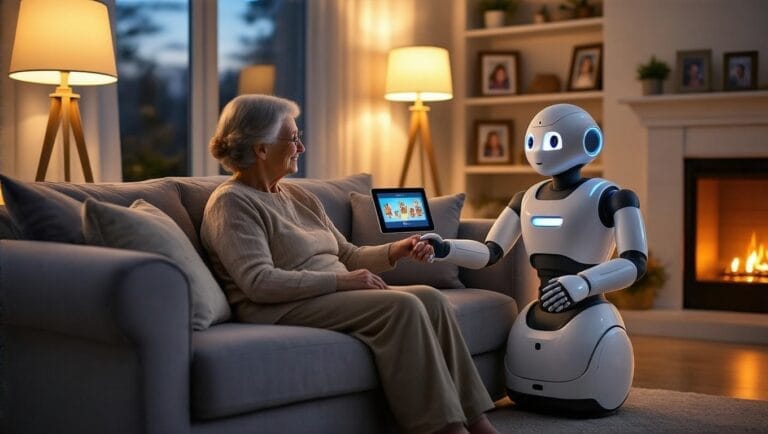Answer just a few questions and we'll have you matchedwith your perfect Companion Robot!Click now for your FREE custom report!
Assistive Companion Robots: Life-Changing Technology for Disabled Individuals
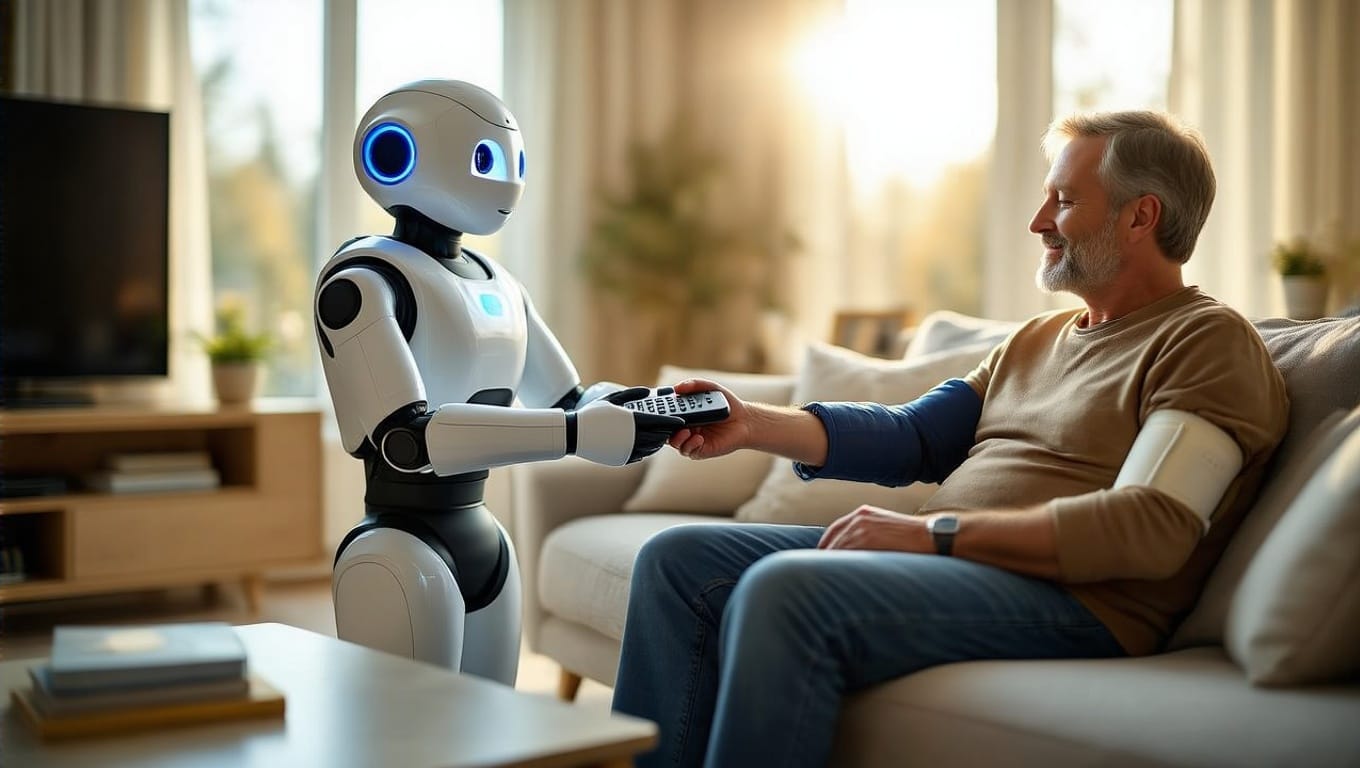
Revolutionizing Independence: How Assistive Robots are Changing Lives for Disabled Individuals
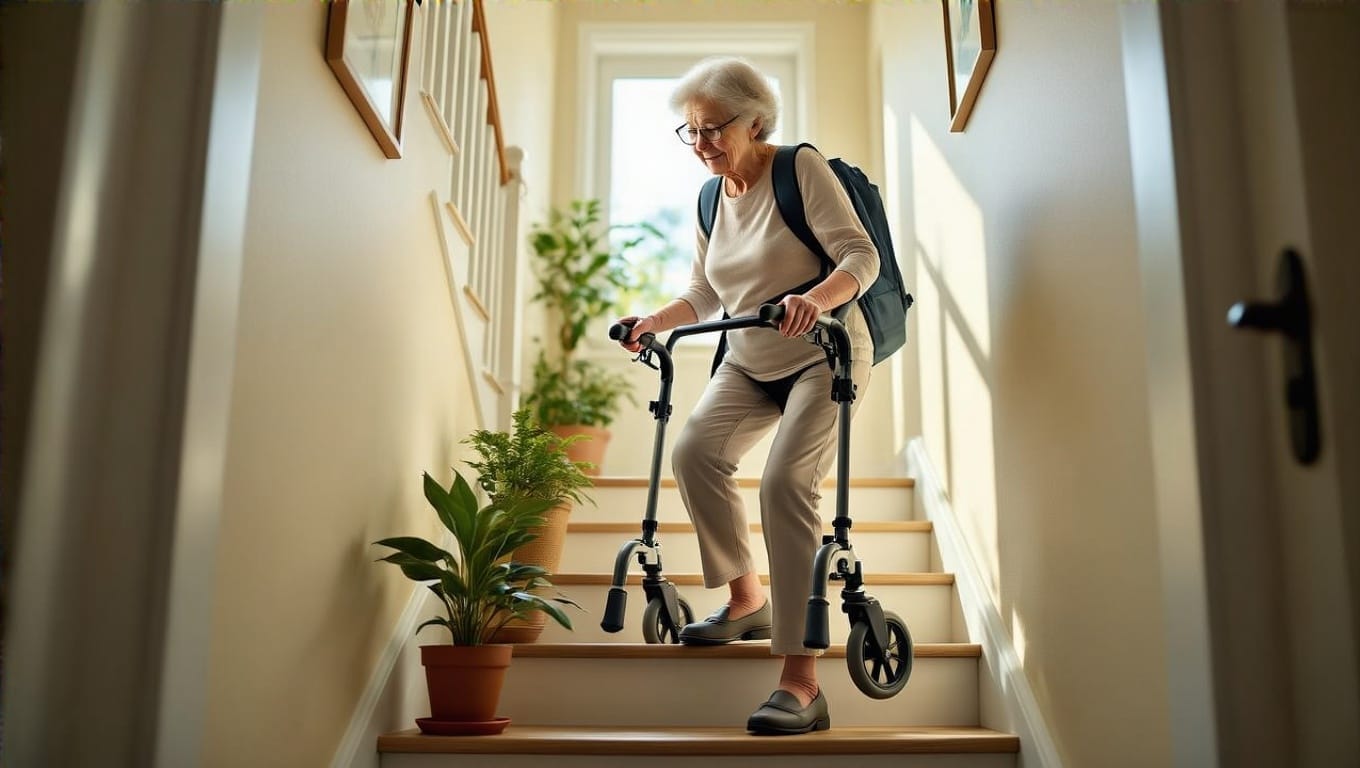
Picture this: You’re struggling to reach the TV remote on the coffee table, but your arms just won’t cooperate. Frustrating, right? Now imagine a friendly robot sidekick swooping in to save the day, handing you that elusive remote with a cheerful beep. Welcome to the future of assistive technology, folks!
Assistive robots are quickly becoming the unsung heroes for many disabled individuals, offering a helping hand (or claw) when human assistance isn’t available. These high-tech helpers are designed to tackle everything from mundane household chores to complex medical tasks, giving people with disabilities a newfound sense of independence and control over their lives.
But let’s be real – we’re not talking about some sci-fi dystopia where robots rule the world (sorry, Skynet fans). These companion robots for disabled individuals are more like R2-D2 than the Terminator – cute, helpful, and definitely not plotting world domination.
Breaking Down Barriers: Types of Assistive Robots
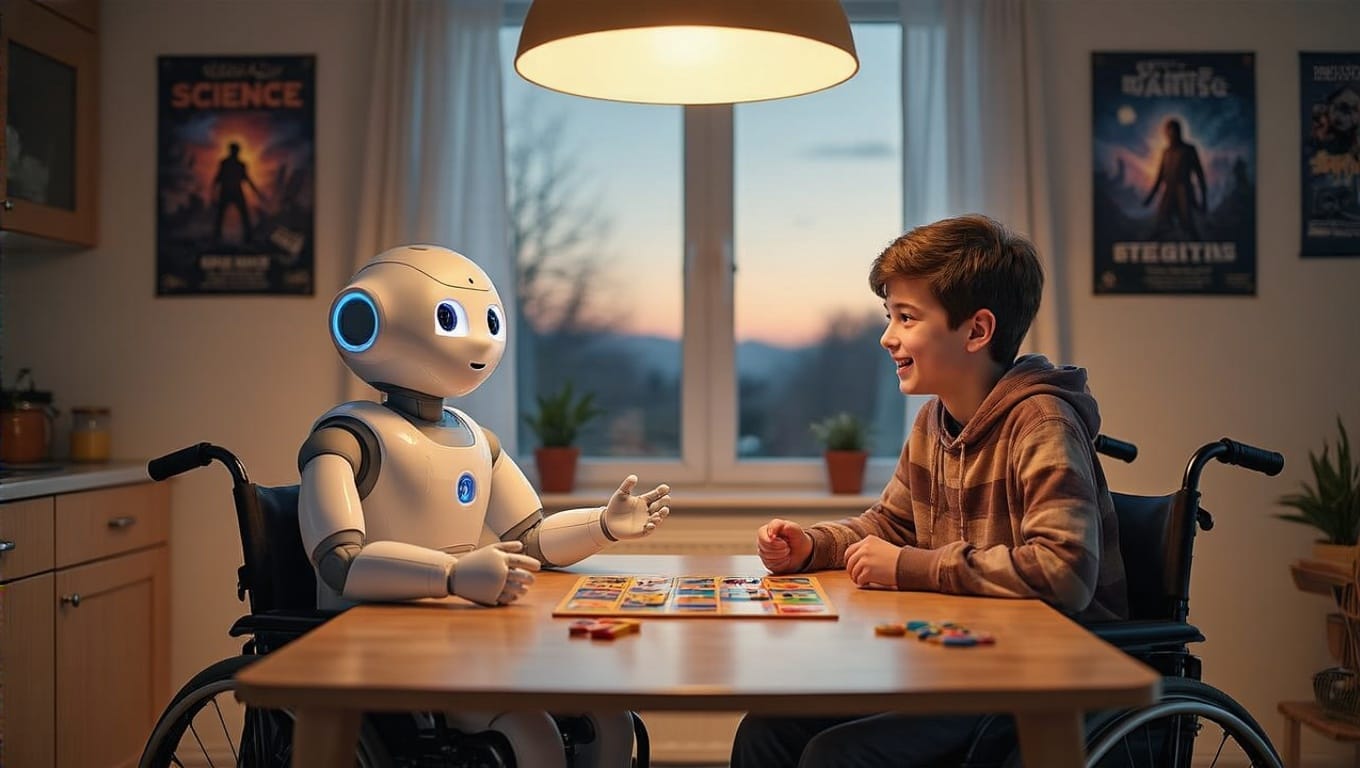
Now, you might be wondering, “What exactly can these robot buddies do?” Well, grab your popcorn, because the list is pretty impressive:
Mobility Assistants: These are like souped-up power wheelchairs with a brain. They can navigate obstacles, climb stairs, and even help users stand up. Talk about giving legs to those who need them!
Manipulation Aids: Got butter fingers? These robots lend a steady hand for tasks like picking up objects, opening doors, or even helping with personal grooming. No more fumbling with that pesky toothpaste cap!
Social Companions: Loneliness, meet your match. These chatty bots provide companionship, reminders, and can even crack a joke or two. It’s like having a friend who never gets tired of your stories (and doesn’t raid your fridge).
Therapy Assistants: From physical therapy to cognitive exercises, these robots are like personal trainers that never yell at you to do “just one more rep!”
Smart Home Integrators: Imagine controlling your entire house with voice commands or simple gestures. These robots make it possible, turning your home into a high-tech haven.
The best part? Many of these assistive robots can multitask, combining several functions into one adorable package. It’s like having a Swiss Army knife, but way cooler and with fewer pointy bits.
Game-Changers: Real-Life Success Stories

Now, I know what you’re thinking – “This all sounds great on paper, but does it actually work?” Well, buckle up, because these success stories might just blow your mind:
Meet DEKA’s “Luke” arm, a prosthetic limb so advanced it can handle eggs without cracking them. Named after Luke Skywalker (because of course it is), this bad boy allows users to perform delicate tasks with incredible precision. Empowering users through customized interfaces like this is changing the game for prosthetics. Who needs the Force when you’ve got cutting-edge robotics?
Then there’s Pepper, the charming humanoid robot developed by SoftBank Robotics. This little guy is being used in Japanese nursing homes to provide companionship and cognitive stimulation for elderly residents. It’s like having a grandkid who never grows up or asks for money!
And let’s not forget about the ExoAtlet, a robotic exoskeleton that’s helping people with spinal cord injuries walk again. Assistive robotics continues to make transformative strides in rehabilitation and mobility. It’s basically Iron Man’s suit, minus the whole flying and shooting lasers part (but hey, maybe in the next update?).
These aren’t just cool gadgets – they’re life-changing technologies that are giving people back their independence, dignity, and in some cases, their ability to connect with the world around them.
The Human Touch: How Assistive Robots Improve Quality of Life
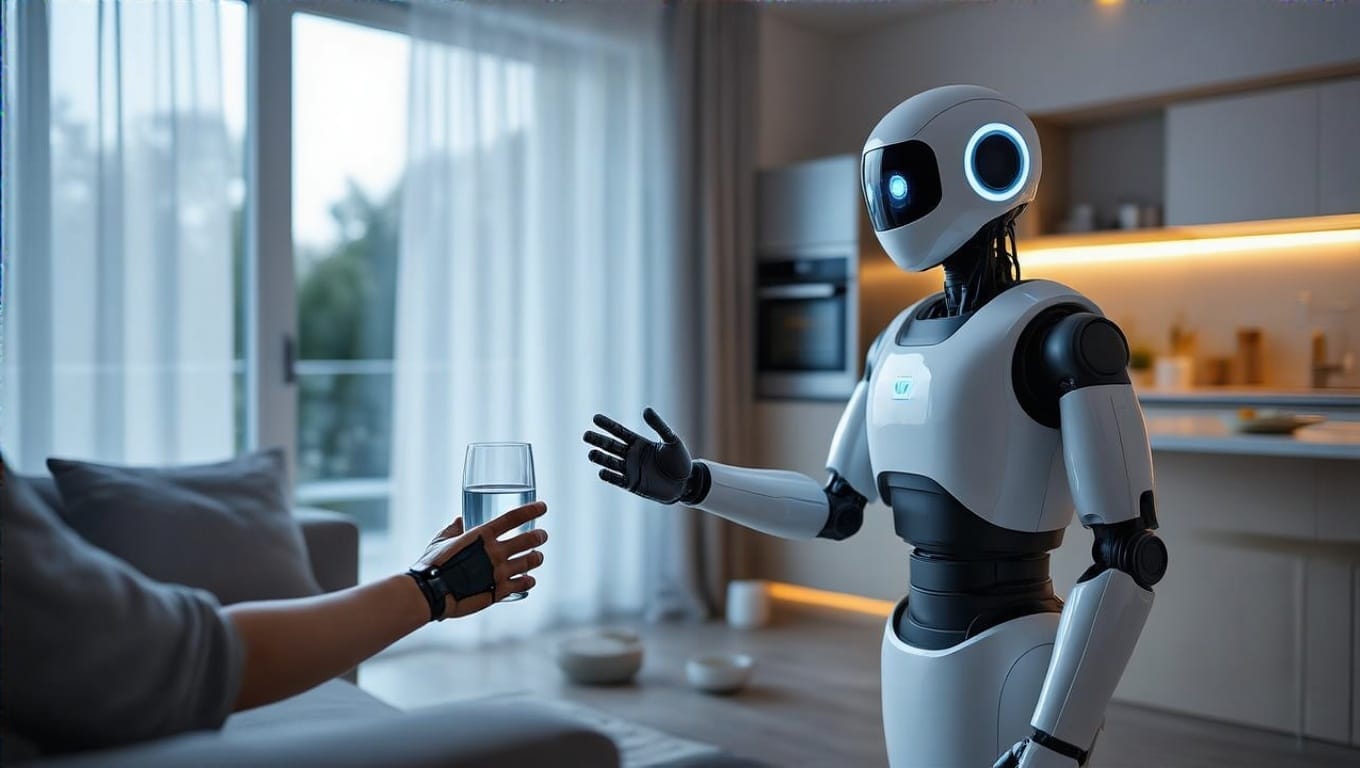
Now, I know what some of you might be thinking: “But won’t these robots replace human caregivers?” Fear not, my skeptical friends! Assistive robots aren’t here to steal jobs – they’re here to complement human care and fill in the gaps.
Here’s how these mechanical marvels are making a real difference:
Independence Boost: Assistive robots give disabled individuals the power to do things on their own terms. No more waiting for help to grab a snack or turn on the TV. It’s freedom in robot form!
Reduced Caregiver Burden: By handling routine tasks, robots free up human caregivers to focus on more complex, emotionally supportive aspects of care. Telefonica highlights the value of this supportive partnership in care environments. It’s a win-win!
24/7 Assistance: Unlike human helpers, robots don’t need sleep (or coffee breaks). They’re always on call, providing peace of mind for both users and their families.
Consistent Care: Robots don’t have bad days or mood swings. They deliver the same level of care, day in and day out, without complaint. (Though I can’t promise they won’t sass you occasionally.)
Privacy and Dignity: For tasks that might be embarrassing to ask a human for help with, robots offer a discreet alternative. No more awkward moments during personal care routines!
Social Interaction: For individuals who might be isolated due to their disabilities, social companion robots provide a form of interaction and mental stimulation. They’re like pen pals that live in your house!
Data Collection: Many assistive robots can track health metrics and daily activities, providing valuable insights for healthcare providers. It’s like having a really attentive, non-judgmental roommate who takes really good notes.
Challenges and Future Developments
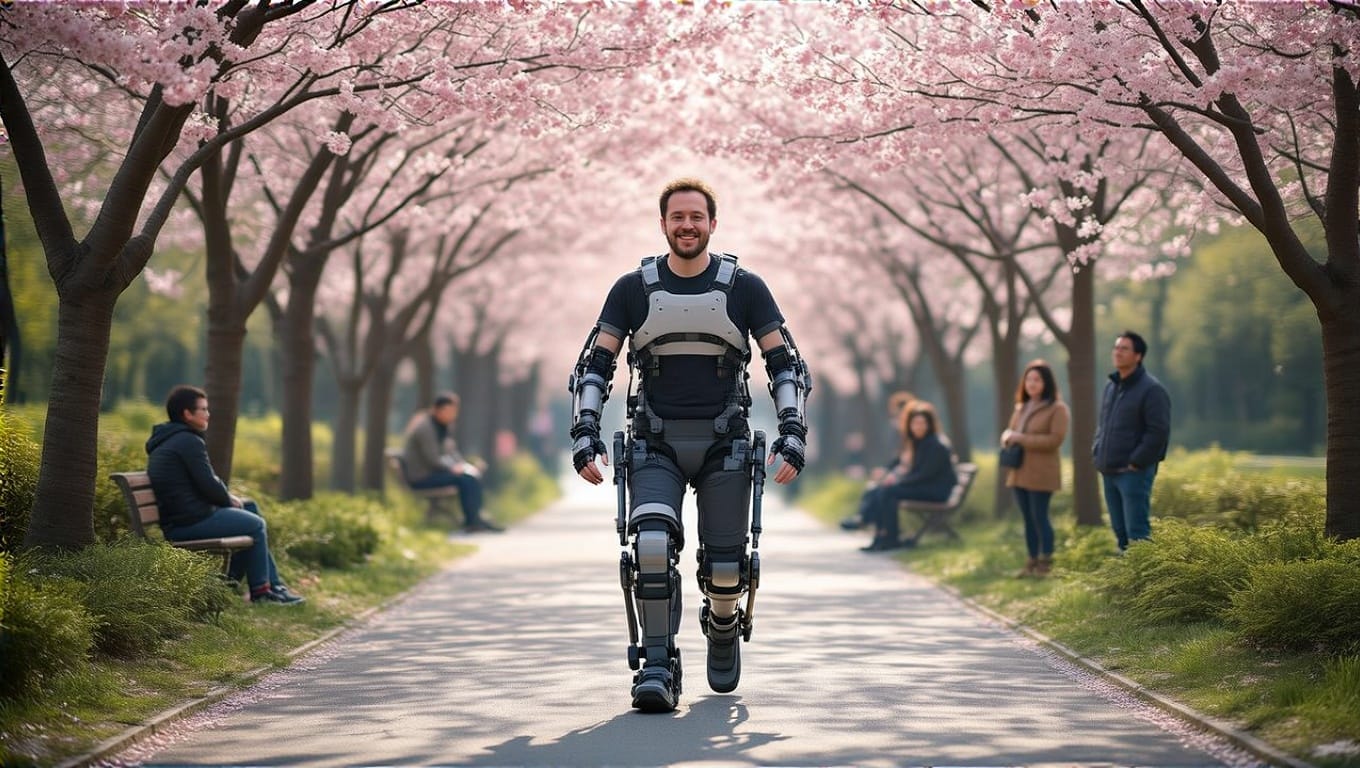
Now, before we get too carried away with visions of a robot-assisted utopia, let’s keep it real for a moment. Like any groundbreaking technology, assistive robots face their fair share of challenges:
Cost: These high-tech helpers don’t come cheap. Many are still out of reach for the average consumer. But hey, remember when flat-screen TVs cost a small fortune? Give it time.
Technological Limitations: We’re not quite at “I, Robot” levels of sophistication yet. There’s still work to be done in areas like fine motor control and adaptive learning.
Acceptance and Trust: Some people might feel uneasy about relying on a robot for care. It’s a natural reaction – change can be scary, especially when it comes with flashing lights and beeping noises.
Ethical Considerations: As robots become more advanced, we’ll need to grapple with questions about autonomy, privacy, and the nature of human-robot relationships. Heavy stuff, I know.
But don’t worry, it’s not all doom and gloom! The future of assistive robotics looks brighter than a robot’s LED eyes. Researchers and engineers are working tirelessly to overcome these challenges, pushing the boundaries of what’s possible.
We’re talking about developments like:
Brain-Computer Interfaces: Imagine controlling your robot assistant with just your thoughts. It’s not science fiction – it’s already in the works!
Soft Robotics: Robots that are squishier and more flexible, capable of safer and more natural interactions with humans. Think less “rigid metal man” and more “helpful marshmallow friend.”
Artificial Intelligence and Machine Learning: Robots that can learn and adapt to individual users’ needs, becoming more helpful over time. It’s like having a sidekick that levels up with you!
Improved Sensory Capabilities: Robots that can see, hear, and even feel more like humans do, allowing for more nuanced and responsive care.
Wrapping It Up: The Robot Revolution is Here (And It’s Pretty Awesome)

So there you have it, folks – the lowdown on how assistive robots are changing the game for disabled individuals. From giving people the power to control their environment to providing round-the-clock companionship, these mechanical marvels are truly revolutionizing what it means to live with a disability.
Are they perfect? Nope. Do they face challenges? You bet. But the potential they hold for improving lives is nothing short of extraordinary. As the technology continues to advance, we can look forward to a future where disability doesn’t have to mean limitation – a future where everyone has access to the support they need to live life to the fullest.
So the next time you see a robot rolling down the street, don’t be alarmed. It might just be on its way to make someone’s day a little bit easier, a little bit brighter, and a whole lot more independent. And really, isn’t that something we can all get behind?
Now, if you’ll excuse me, I need to go practice my robot dance moves. You know, just in case our new mechanical overlords appreciate a good groove.



